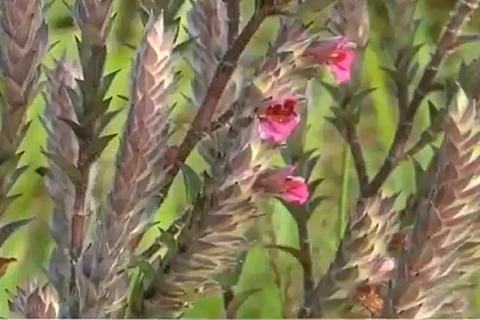

The famous Anandapadmanabha Swamy Temple near Kumbla in Kasaragod district was popular for many reasons including its location in the middle of a lake. And recently, a new species of plant, found near the temple has been named after it. Termed Lepidagathis ananthapuramensis, the new species of plant was found in the laterite plateau where the temple is situated.
The plant belongs to Lepidagathis genus and the family Acanthaceae. There are 33 species of plants that belong to this genus in India.
A group of researchers P Biju from the Government College in Kasaragod, VS Anil Kumar and S Arya from the University College in Thiruvananthapuram, EJ Josekutty from the Government Brennen College in Thalassery and Jomy Augustine from St Thomas College in Pala, have published an article on the discovery of the plant in Phytotaxa, a journal on plant taxonomy.
The article says that out of eight species of Lepidagathis, which are found in Kerala, four of them are endemic to western ghats. A similar species was earlier found in Madayipara in Kannur district in 1991. This plant was named Lepidagethis keralesis. The study says that the new species is undescribed and hence named L ananthapuramensis. The plant was spotted during a field study by the researchers.
Locally, these plants are called paramullu. It's an herb that grows up to 50 to 100 cm and has hairy stems and leafy veins. Purple flowers are clustered on one side of the flowering stalks.
Locals say that the plant is found in abundance in the area and many that there are several flowering plants that are found only in laterite terrain, which don’t require much soil for them to grow.
The Ananthapura lake temple was also known for the presence of herbivorous crocodiles. The crocodile named Babiya was quite famous and a popular ritual where temple priests feed the crocodile. Locals say that the crocodile would peep outside the water if the temple staff called it by its name.